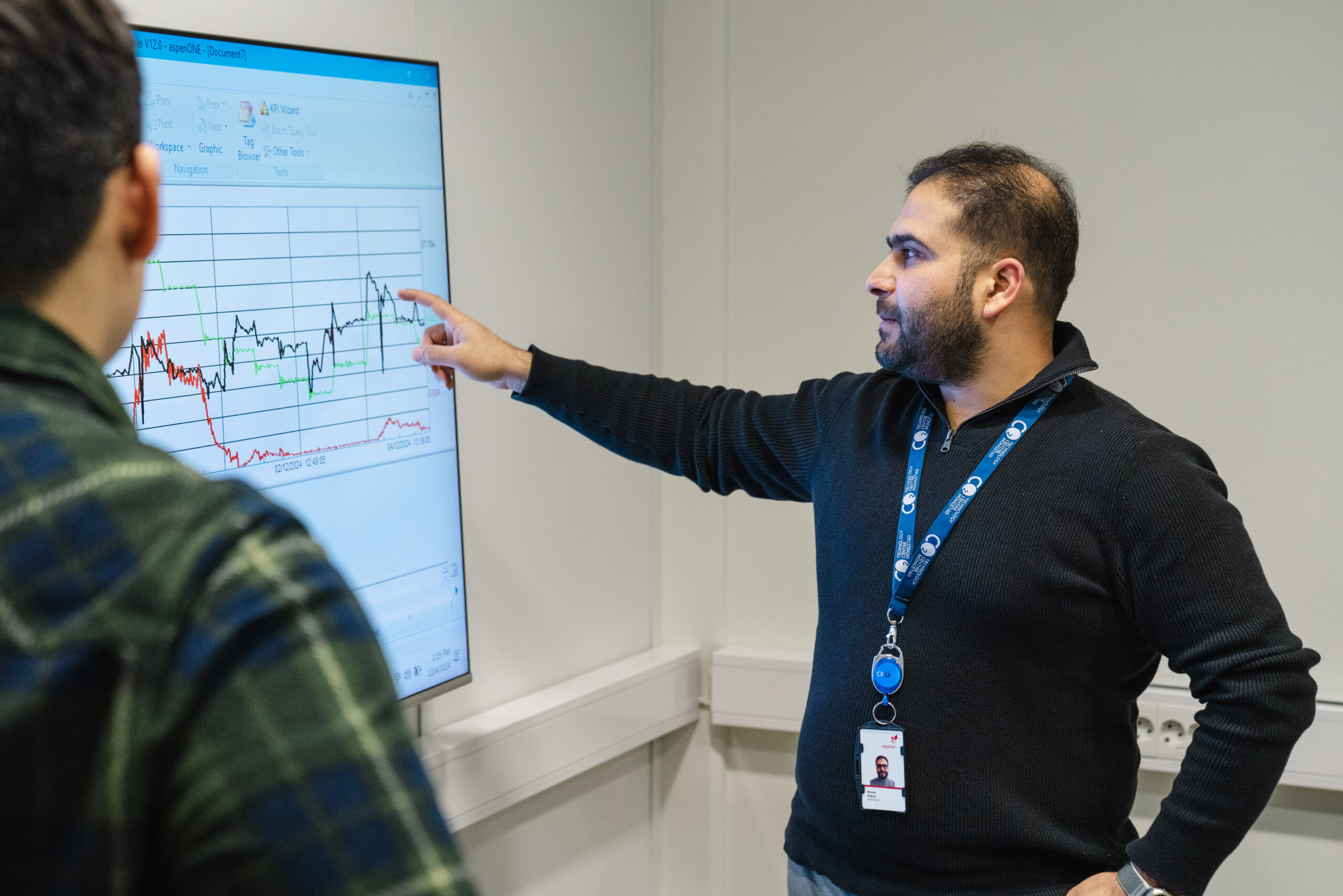
10.06.2025
TCM Driving CO₂ Capture Efficiency Through Modeling and Optimization
One of TCM’s key responsibilities is to share knowledge about CO2 capture. TCM has recently contributed to two significant studies demonstrating how process modelling can improve the efficiency of CO2 capture.
These contributions emphasise TCM’s strategic role in improving the performance and economic viability of post-combustion CO2 capture technologies.
Through digital modeling, data analysis, and large-scale validation, TCM helps bridge the gap between lab-scale innovations and industrial-scale applications. Process modeling plays a critical role in this work—providing insight into complex system behavior, identifying operational limits, and revealing opportunities for reducing both energy consumption and costs.
Optimizing Plant Operations for Maximum CO2 Capture
TCM contributed to a scientific article developed by the University of South-Eastern Norway (USN), titled “Optimum Conditions and Maximum Capacity of Amine-Based CO2 Capture Plant at TCM.” The study explores how the amine-based plant at Mongstad can be optimized for both efficiency and capacity.
Using Aspen Plus to simulate real-world operational scenarios, the research team developed a robust, rate-based model calibrated with data from TCM’s test campaigns.
Key findings include:
- An optimal configuration that uses maximum gas flow, both CHP and RFCC strippers, and a 15% rich-solvent bypass.
- This setup achieved a CO2 removal efficiency of 90% with a specific reboiler duty of just 3.0 MJ/kg CO2.
- For maximum throughput, the plant can operate with an amine flow of 230 tons per hour, capturing up to 98% of CO2.
“These results are vital for the global CCS community,” says Koteswara Rao Putta, Technical Services Lead and Project Coordinator at TCM, and one of the paper’s three authors. “They show how full-scale facilities like TCM not only validate capture technologies but also help identify ways to reduce energy use and improve scalability.”
He also highlights the value of TCM’s collaboration with academic institutions, which plays a key role in transferring industrial process knowledge to students and strengthening CCS expertise at the university level.
Modeling CESAR1: Understanding and Managing Uncertainty
The second study, “Modeling and Uncertainty Quantification of CESAR1 Solvent System,” focuses on simulating the performance of the CESAR1 solvent—a blend of AMP and piperazine, known for its high efficiency and low energy requirements.
This research combines process modeling with uncertainty quantification (UQ) to assess how variations in key input parameters—such as flue gas composition or solvent flow rate—impact overall performance. UQ techniques, including sensitivity analysis, help identify the most influential variables, enabling more robust and cost-effective plant design.
Such insights are essential for reliably scaling up capture processes and making informed decisions in the design of next generation capture facilities. The study offers valuable tools for engineering optimization and risk reduction.
Together, these studies demonstrate the power of advanced modeling and validation in de-risking CO2 capture technologies. By integrating full-scale operational experience with detailed simulation, TCM continues to provide critical knowledge that supports global efforts to accelerate decarbonization.
These two studies demonstrate how advanced modelling and full-scale validation can reduce the risk associated with carbon capture technologies. By combining operational experience with rigorous simulations, TCM continues to provide valuable insights that accelerate the global transition to a low-carbon economy.
